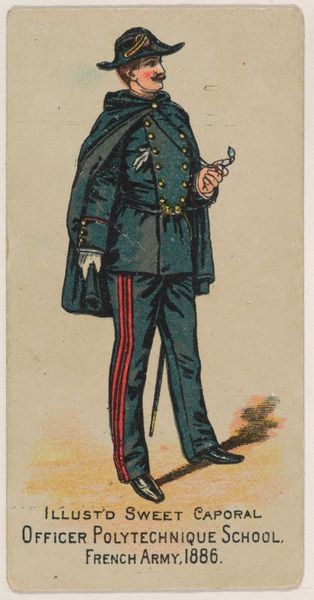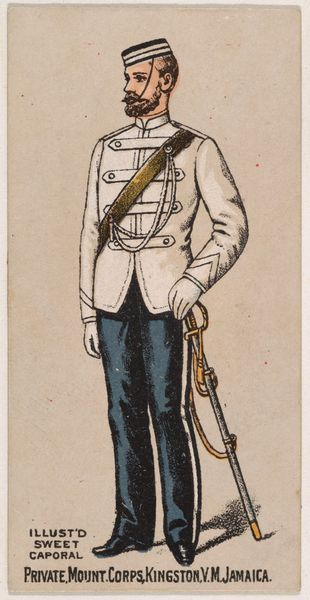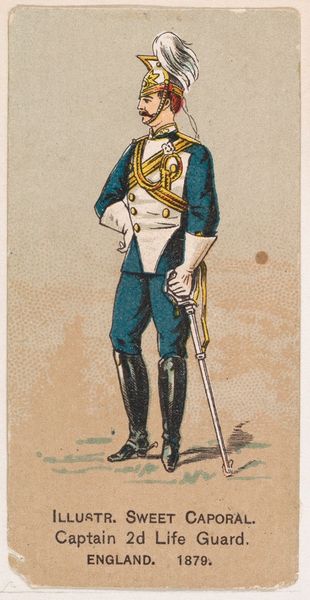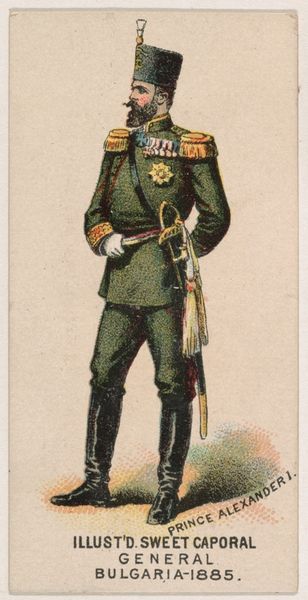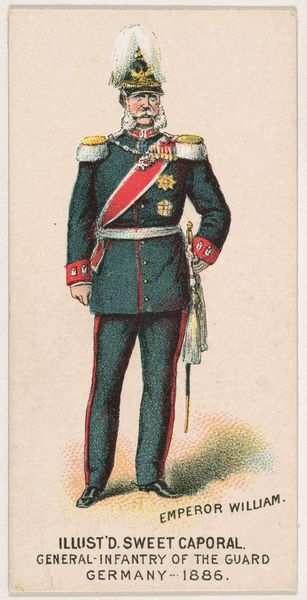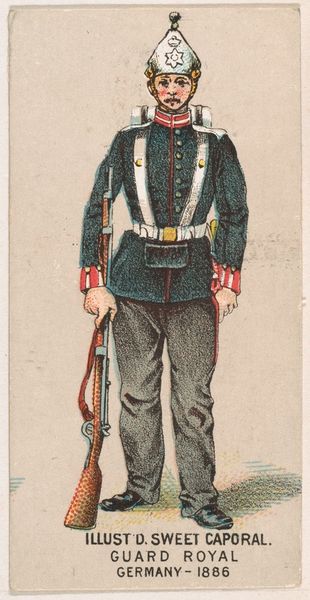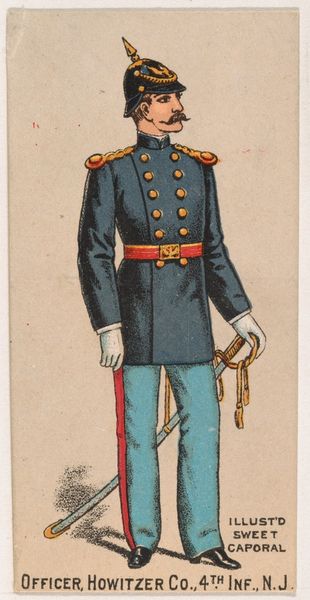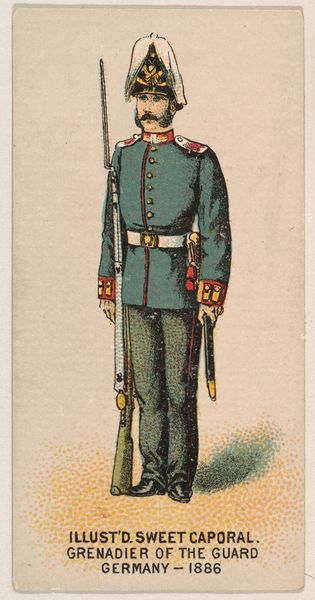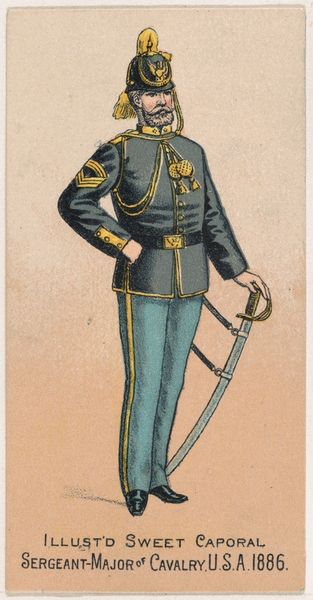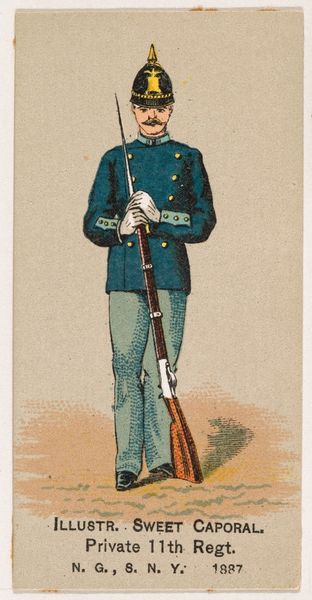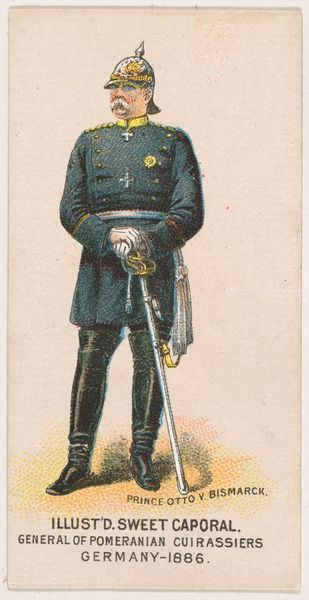
Red Eagle, Prussia, from the World's Decorations series (N30) for Allen & Ginter Cigarettes 1890
0:00
0:00
drawing, graphic-art, coloured-pencil, print
#
drawing
#
graphic-art
#
coloured-pencil
# print
#
coloured pencil
#
watercolour illustration
#
history-painting
#
decorative-art
Dimensions: Sheet: 2 3/4 x 1 1/2 in. (7 x 3.8 cm)
Copyright: Public Domain
Curator: Here we have "Red Eagle, Prussia," a print made in 1890 by Allen & Ginter as part of their "World's Decorations" series, a promotional insert for their cigarettes. Editor: Well, my first thought is "order." The precision, the almost architectural rendering of the medal itself. It evokes formality, hierarchy. Curator: Allen & Ginter weren't interested in the recipients, but in the medals themselves, divorced from individual narratives. It's interesting to consider the appeal of these signs of prestige, mass-produced and consumed like tobacco. The use of colored pencils suggests a handmade touch, ironically adding a veneer of craft to industrialized promotion. Editor: And yet, those symbolic devices persist in exerting influence! Look at that tiny but potent Prussian eagle, nested in the cross's center. Red, sharp, clutching emblems of power... it speaks volumes, even on this small scale. "Sincere et Constanter"—sincerely and steadfastly—the motto demands unwavering allegiance. Curator: This particular choice makes me think about national identity, of how certain emblems came to visually stand for a complex web of social, economic, and political connections, boiled down into something small and replicable, packaged with consumable goods. It becomes divorced from any original purpose, repackaged as capital, pure brand recognition, long before advertising as we understand it really took off. Editor: Absolutely. The layers of visual language—the cross, the eagle, the colors themselves—became condensed into easily readable messages of nationhood. It is powerful shorthand; visual ideas can trigger immediate emotional responses that shape understanding, inspire loyalty or disdain, independent of how that emotion originates. Curator: I am not sure this was done intentionally. We shouldn't think of every action by people in the past as purely about messaging. However, what is remarkable is how effective these early attempts at branding continue to resonate over time. Editor: Agreed. Even now, seeing it separated from its intended context, one can't deny its power, the symbolic density packed into such a tiny, precisely rendered object. Curator: Exactly, a tiny window onto the intersection of craft, commerce, and imperial ambition. Thank you for illuminating those important points. Editor: The pleasure was mine, considering how meaning accrues to images, especially through our dialogue today.
Comments
No comments
Be the first to comment and join the conversation on the ultimate creative platform.

